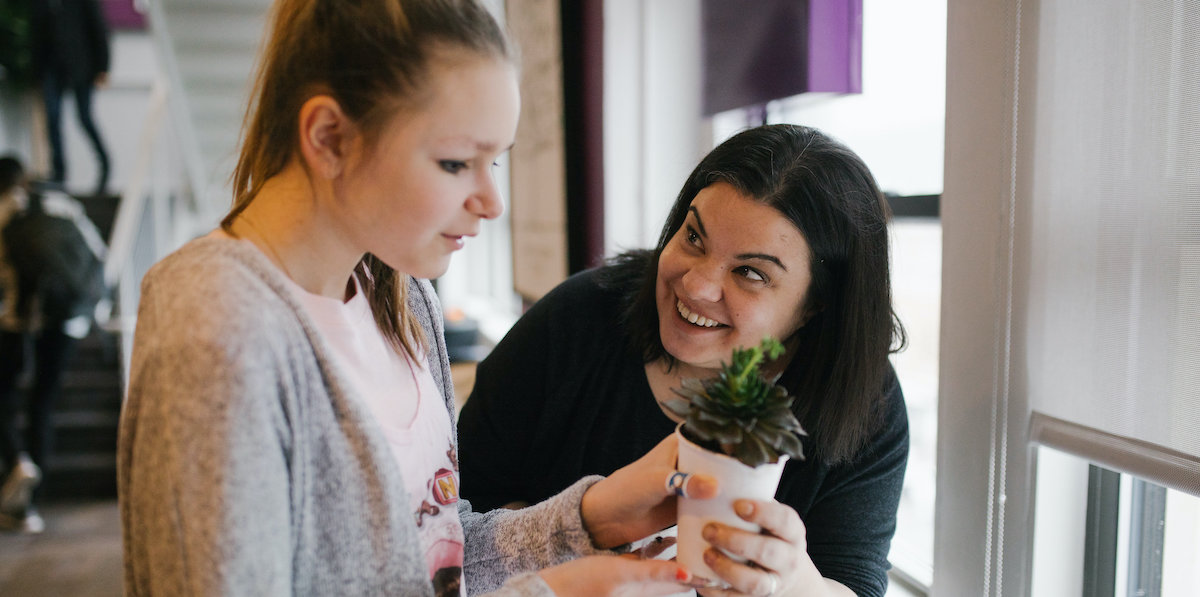I remember walking into my first class as a Fusion English teacher. I couldn’t wait to explore intense, academic literary avenues with my students. Shakespeare! Twain! Bronte! Angelou! I’m surprised the vibrance of my rose-colored glasses did not blind my students.
My first student walked in. I brightly greeted her and explained how truly excited I was to explore the fascinating world of literature.
She responded, “I hate you. I hate this. Please shut up.”
And my rose-colored glasses dimmed.
I was so excited to teach academics that I really didn’t think about how completely uninterested someone else could be in the topic. All I could think about was how completely rude this kid was. After weeks of my perceived mistreatment, I was ready to stop trying. She doesn’t care, I thought, so neither will I.
And then I was introduced to social-emotional learning (SEL).
What is Social-Emotional Learning?
According to CASEL (2020), “SEL is the process through which all young people and adults acquire and apply the knowledge, skills, and attitudes to develop healthy identities, manage emotions and achieve personal and collective goals, feel and show empathy for others, establish and maintain supportive relationships, and make responsible and caring decisions.” Basically, social-emotional learning is the way people become people. Where do people learn to become people in their formative years? School.
I think when educators talk about social-emotional learning, they are often met with one of two extreme sides. The first side is met with caring only for the emotional needs of their students. For this side, academics always come last and should never be the primary focus of their students. We should only ever talk about emotions! The second side is the pessimist. This side is filled with those who believe any emphasis on emotional needs will dissuade their student from focusing on academics which is the reality and emotions are for hippies; thus social-emotional needs never belong in the classroom.
Neither view represents the balanced reality of what social-emotional learning could be.
Social-Emotional Learning in the Classroom
Social-emotional learning is a foundational need for success in the academic classroom and beyond. It requires a combination of caring about your student and teaching them the required material. Social-emotional learning can be as intense as making a presentation analyzing their growth throughout the semester or as simple as asking their opinions of a character. Such learning asks our students to put themselves in others’ shoes. It asks them to tell us how they believe they did on an exam. It involves the students when creating a project-rubric in science class. It asks them how learning about chemical combinations impact our world. When we place the student at the forefront and purpose of our teaching, it becomes social and emotional.
When we get our students’ buy-in, it makes teaching easier and more complete. It helps us understand how to reach out to students so the material is more meaningful. It’s not ignoring academics for the sake of emotions, and it’s not ignoring emotions for the sake of academics. It’s a happy medium where we consider the student as a truly holistic individual who requires real-life tools to be successful.
Basically, social-emotional learning teaches our students how to think of things in human ways and apply that aspect of being human towards their academics.
Showing You Care
With my very first student, I stopped looking at her as merely defiant and disrespectful and started looking at her as a human. What was she interested in? How can I incorporate those interests into English? What drives her?
Most importantly, how can I show her I care?
And I did. I just talked with her. We read books about strong, historical women. We read Antony and Cleopatra and not Romeo and Juliet because she loved Egyptian history. We talked about literature as conflict and loss and grief because it turns out that’s what she had experienced. She just wanted to know that someone cared about her thoughts and ideas. I hate that it took me so long to figure that out, but did it completely change me when I did.
Social-emotional learning is not a replacement for therapy or medical support, but it is a means to allow your students to grow and learn in the place they spend most of their time. It is a way to get your students motivated and to be willing to learn and grow. It is a way to get to know and support them beyond just facts and figures.
To be honest, inviting social-emotional learning into my classroom invited more positive relationships and learning than I had thought possible. I am so grateful for it.


